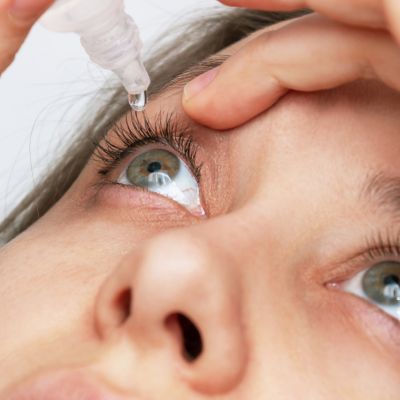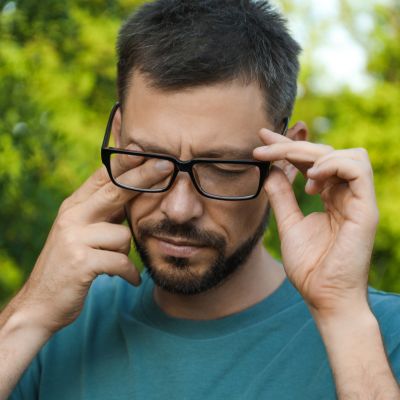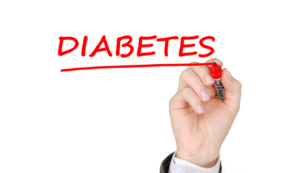You may be tempted to buy eye drops for temporary relief from dry eye syndrome, which may be enough in some minor cases. However, it’s important to follow up with your eye doctor if you experience chronic dry eye symptoms. With new technology on the market, optometrists can treat dry eye at its source, providing you with long-lasting relief.
Dry eye diagnosis involves a routine eye exam and tests to identify its cause. Treatment ranges from eye drops to IPL, based on the severity of your condition. Factors like age, digital screens, and lifestyle affect dry eye syndrome. This emphasizes the importance of personalized care for relief and eye health.
Dry Eye Diagnosis
Diagnosing dry eye syndrome begins with an eye exam. Your optometrist can perform specialized tests to determine what’s causing your symptoms.
These tests include:
- Epithelial staining
- The Schirmer test
- Meibomian glands evaluation
- Tear chemistry

Epithelial staining involves eye drops with a temporary dye. They allow your eye doctor to evaluate hows quickly your tears evaporate. They also reveal any areas on the surface of the eye that don’t have adequate lubrication. The Schirmer test uses a small strip of blotting paper placed under each of your lower eyelids. This measures the amount of tears your eyes produce.
During a meibomian gland evaluation, your meibomian glands are examined with a magnifying lens. This helps determine if they have become blocked or aren’t producing enough oil. For tear chemistry, a sample of your tears is evaluated for a detailed report of your tear production.
Dry Eye Treatment
Your eye doctor can recommend treatment for dry eye once they know its cause. Mild symptoms can be treated with over-the-counter medications like artificial tears, gels, or ointments. In more severe cases, prescription eye drops may be recommended.
Warm eyelid compresses or scrubs may be helpful for meibomian gland dysfunction. Intense pulsed light therapy (IPL) may also be recommended. Lifestyle changes such as quitting smoking or changing medications are beneficial.
Hardin Valley Eyecare & Optical is thrilled to now offer IPL for patients suffering from dry eye syndrome. The LUMENIS IPL device we use is the only FDA-approved equipment for dry eye treatment. It is one of the best ways to address Meibomian gland dysfunction and dry eye. Contact us today to book your IPL appointment!
What is Dry Eye Syndrome?
It’s estimated that over 16 million American adults (6.8% of the adult population) have dry eye syndrome (DES). It’s a common condition that develops with age, particularly for those over the age of 50. However, dry eye has been rising in younger people. This may be due to an increase in cases of computer vision syndrome.
Common symptoms of dry eye include irritation or grittiness. Other symptoms often include:
- Irritation
- Grittiness
- Burning
- Redness
- Blurry vision
- Sensitivity to light
Dry eye syndrome can occur for different reasons. It’s usually when the eyes fail to produce enough tears. It can also occur when the tear film is compromised. It consists of a:
- Watery layer
- Lipid layer
- Mucous layer
The right balance of these layers keeps the eyes lubricated, clean, and disinfected. It can be disrupted for a number of reasons, including if you wear contact lenses. This is because they can interfere with the tear film.
Other factors can affect your tear film as well, providing a greater risk for dry eye. They include:
- Smoking
- Dry environments
- Allergies
Certain factors can exacerbate the condition such as:
- Tear drain dysfunction
- Issues with the tear duct
- Abnormalities on the eye’s surface
When tear quality or production is inadequate, your eyes may quickly feel dry. Understanding what’s causing the problem is important for finding the best treatment.
Are you fed up with your dry eye symptoms? Schedule your appointment today to find out which treatment options are best for you!
Diagnosing dry eye requires various tests to identify its underlying cause. Treatment options span from over-the-counter medications to IPL therapy. Factors such as age and prolonged screen usage significantly impact dry eye syndrome. This highlights the need for personalized care, reducing symptoms and safeguarding eye health.
Hardin Valley Eyecare & Optical has been serving Knoxville since 2009. Located at 10904 Spring Bluff Way, you can schedule an appointment online or give us a call at (865) 888-0892.
*This blog was originally published in February of 2019. It has since been updated for clarity and new information.






